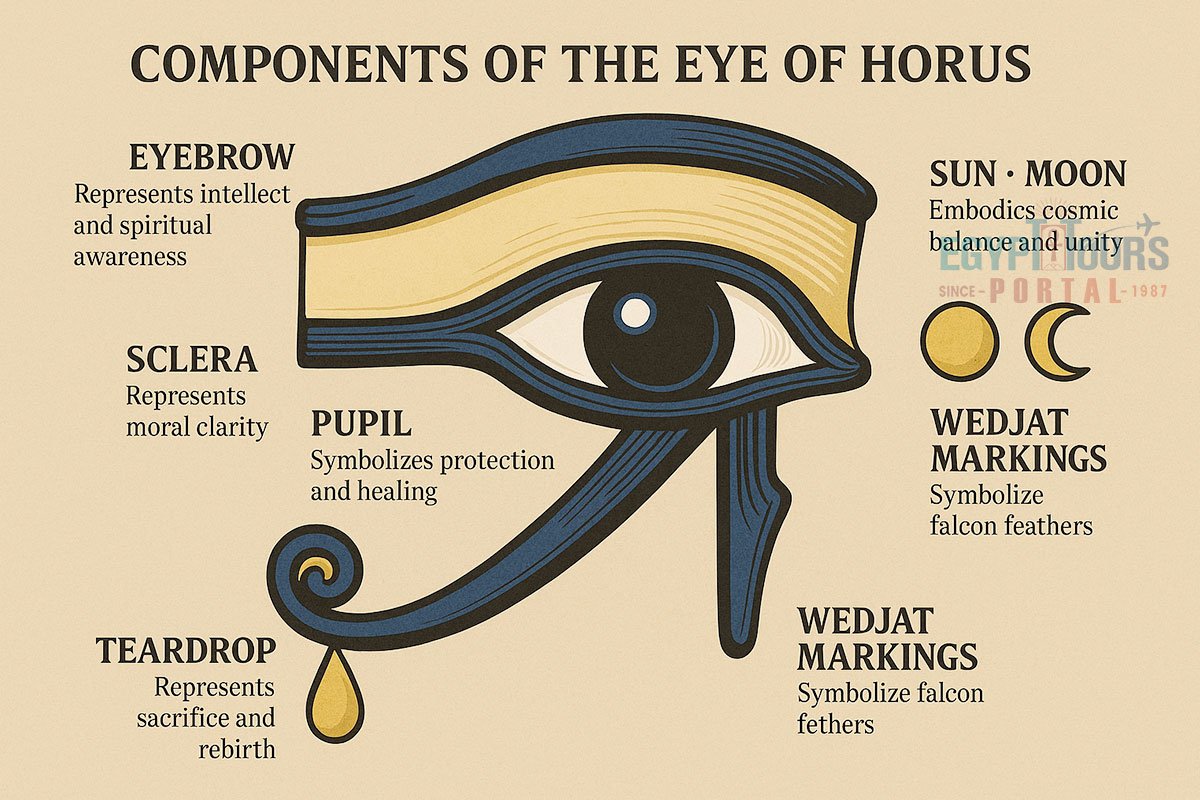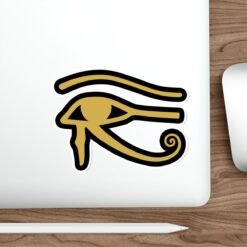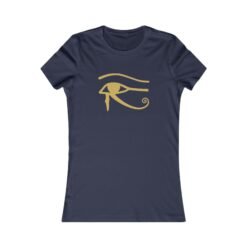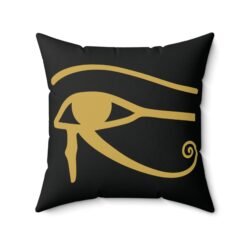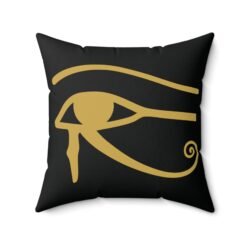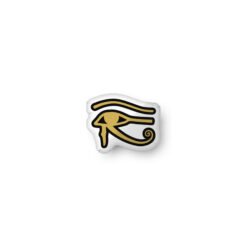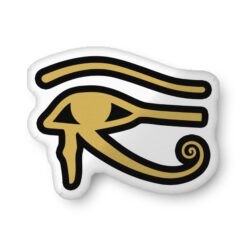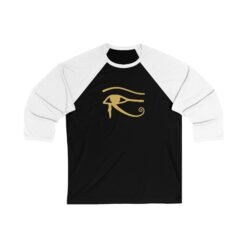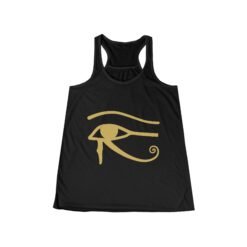Ancient Egyptian Culture, History and Mythology, Mythology, Mythology and Culture, Mythology and Healing, Mythology and History
The Eye of Horus: A Timeless Symbol of Protection and Power
Introduction to the Eye of Horus
The Eye of Horus, an emblem deeply rooted in ancient Egyptian mythology, serves as a powerful symbol of protection, health, and restoration. Its origins trace back to the myth of Horus, the sky god, who lost his left eye during a conflict with his uncle, Seth. The subsequent restoration of this eye symbolizes not only physical healing but also the victory over chaos and disorder. This tale encapsulates the essence of the Eye of Horus as a protector, safeguarding individuals from harm and ushering in health and prosperity.
Throughout ancient Egyptian civilization, the Eye of Horus transcended mere storytelling, becoming a pervasive cultural symbol. Often depicted in hieroglyphics and art, this talisman was believed to possess protective qualities, making it a significant artifact in tombs and burial rituals. The eye was thought to fend off evil spirits, thereby ensuring a safe passage into the afterlife. This protective attribute made it a common motif in amulets, jewelry, and various artifacts, reinforcing its role as a guardian against misfortune and suffering.
Additionally, the Eye of Horus was associated with the concept of health and wholeness. The intricate design of the eye symbol, reflecting both the right and left sides, represented balance and duality. This was particularly significant in a society that valued equilibrium in all aspects of life. The eye’s symbolism extended beyond protection to encompass restoration and healing, as it was believed that the loss and subsequent recovery of Horus’s eye mirrored the journey from injury to health.
In contemporary times, the Eye of Horus continues to captivate interest, symbolizing power and protection for various cultures worldwide. Its enduring legacy highlights the universal human desire for safety and well-being, making it a timeless emblem that resonates across generations.
The Mythological Background of the Eye of Horus
The Eye of Horus, an iconic symbol originating from ancient Egypt, is deeply embedded in the rich tapestry of Egyptian mythology. This emblem is closely associated with Horus, the falcon-headed god who epitomizes kingship and the heavens. The mythological narrative surrounding Horus involves a fierce struggle for power and retribution that laid the groundwork for the eye’s significant protective qualities, which were believed to safeguard individuals from harm.
The Eye of Horus emerged as a powerful symbol of protection and healing. In ancient Egyptian culture, it was commonly used as an amulet, believed to convey safeguarding properties to its bearer. The eye came to symbolize not only Horus’ defiance against chaos and destruction but also triumph over adversity. As a result, the Eye of Horus transcended its origins, becoming associated with the ideals of protection, health, and well-being in various aspects of daily life, from funerary practices to rituals aimed at invoking divine blessings. Such potent symbolism resonates through the annals of history, demonstrating the eye’s enduring significance in discussions surrounding protection and power. Overall, the mythological context of the Eye of Horus underscores its revered status and rich association with one of ancient Egypt’s most formidable deities.
Utilization in Ancient Egypt: Amulets and Jewelry
In ancient Egypt, the Eye of Horus was a significant symbol, often embodied in various physical forms such as amulets and jewelry. These items played a crucial role in both aesthetic expression and spiritual safeguarding. The Eye of Horus, also known as the Wedjat, represented protection, royal power, and good health. Hence, its imagery was frequently incorporated into personal adornments worn by individuals of all social strata.
Amulets featuring the Eye of Horus were particularly popular, as they were believed to provide the wearer with divine protection against malevolent forces. These charms were commonly made from materials like gold, faience, and precious stones, emphasizing their importance and value. The adornment of these amulets on the body was customary, with individuals often placing them near the heart to reinforce their protective qualities. Additionally, the Eye of Horus was integrated into various types of jewelry, including necklaces, rings, and earrings. Such jewelry not only showcased the intricate craftsmanship of ancient artisans but also served as a continuous reminder of the divine favor bestowed upon the wearer.
The significance of these items extended beyond mere aesthetics; they served as talismans for good fortune and well-being. Many ancient Egyptians believed that wearing an Eye of Horus amulet or piece of jewelry could ward off evil influences and ensure their safety in the afterlife. The usage of these symbols highlights the intersection of art and belief in ancient Egyptian culture, where each piece of jewelry carried profound spiritual implications. Overall, the widespread utilization of the Eye of Horus in amulets and jewelry underscores its enduring legacy as a powerful emblem of protection and prosperity in ancient Egyptian society.
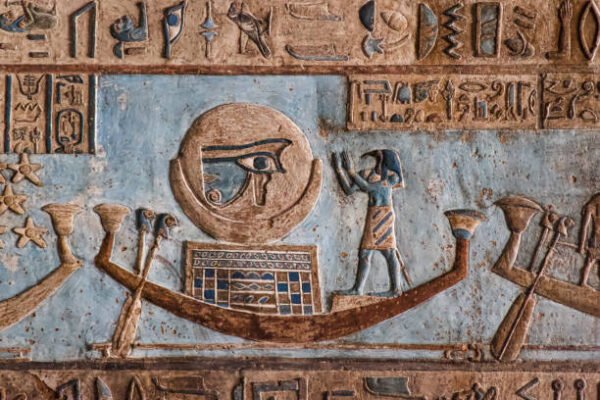
Art and the Eye of Horus: Coffin Artwork and Stelae
The Eye of Horus, an emblematic symbol in ancient Egyptian art, often manifests in various forms within coffin artwork and stelae, reflecting its profound significance as a protective and restorative icon. Coffins, integral to burial practices, often featured intricate designs and inscriptions, where the Eye of Horus was prominently displayed. This symbol served as a safeguard for the deceased, helping to ensure safe passage to the afterlife and protection from malevolent forces. The artistic techniques employed in creating these coffins were diverse, comprising carvings, inlays, and vivid paintwork, all aimed at enhancing the visual impact and the protective qualities attributed to the Eye of Horus.
Stelae, stone slabs erected to commemorate the dead or mark significant events, also prominently featured the Eye of Horus. The artwork depicted on stelae was not merely ornamental but was laden with meaning. Often, the Eye was surrounded by hieroglyphics that detailed prayers or offerings to Horus, further reinforcing his protective role. Artists took great care to ensure that the Eye was rendered with precision; its circular shape, along with finely detailed markings, established a sense of immediacy and connection between the living and the spiritual realm.
Moreover, the choice of colors in these artworks, typically utilizing a palette of vibrant blues and golds, was intentional. These colors were believed to hold magical properties, amplifying the Eye of Horus’s protective abilities. The interplay of color and form in coffin artwork and stelae signifies a deep reverence for the Eye of Horus, reflecting the ancient Egyptians’ desire to harness its power. Ultimately, the artistic representations not only provide insights into cultural practices but also illustrate the enduring legacy of the Eye of Horus as a symbol of protection and strength throughout history.
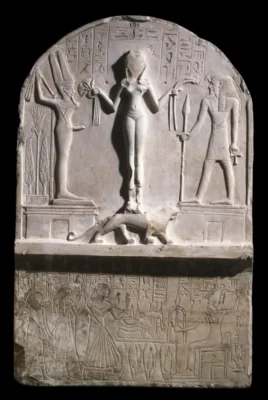
The Eye of Horus in Tattoos: A Form of Eternal Protection
The Eye of Horus, an ancient Egyptian symbol representing protection, healing, and restoration, has transcended its original cultural context to become a popular motif in modern tattoo art. This symbol, rooted in mythology and steeped in rich history, resonates with individuals seeking personal significance and a connection to spiritual or protective attributes. The significance of the Eye of Horus lies not only in its visual appeal but also in the deep meanings embedded within it.
For many, tattoos serve as powerful expressions of identity, beliefs, and values. The Eye of Horus embodies the idea of safeguarding one’s well-being, which is a central reason for its increasing popularity in contemporary tattoo culture. Many wearers perceive this emblem as a form of eternal protection against negative energies and adversity. This belief is derived from the ancient narrative that portrays the Eye as a protective charm used by the god Horus to ward off evil forces. Thus, by choosing this symbol, individuals align themselves with these protective qualities.
Moreover, the artistic representation of the Eye of Horus in tattoos allows for a wide range of customization, making it appealing to diverse audiences. Tattoo artists often infuse modern styles with traditional elements, creating unique designs that maintain the symbol’s core essence while adding contemporary flair. This versatility appeals to individuals from various backgrounds, thus solidifying its position as a timeless emblem in the tattoo community.
In seeking the Eye of Horus as a tattoo, individuals often embark on a journey of self-discovery, embracing personal narratives intertwined with the symbol’s ancient lore. The Eye of Horus, therefore, stands as a testament to the enduring nature of cultural symbols and their capacity to evolve while still holding profound significance in modern expressions of art and identity.
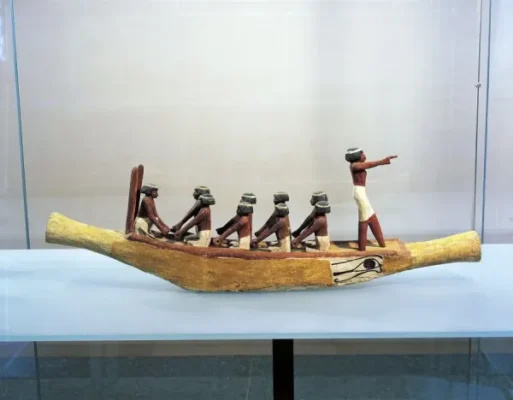
Discovery of the Mummy with Eye of Horus Tattoos
The discovery of a mummy bearing intricate Eye of Horus tattoos provides fascinating insights into ancient Egyptian beliefs regarding protection in the afterlife. Unearthed in a significant archaeological site, this mummy features multiple depictions of the Eye of Horus, a symbol widely recognized in ancient Egypt for its protective qualities and association with restoration and healing. The Eye, often thought to represent the sun and moon, played a central role in ensuring safe passage to the afterlife and safeguarding the deceased from malevolent forces.
This remarkable find not only showcases the artistry of ancient tattooing practices but also serves as a testament to the cultural importance of the Eye of Horus within burial traditions. The mummy’s adornments suggest that the individual was likely from a high status, as elaborate tattoos were often reserved for those with significant social standing. The presence of these symbols may indicate the deceased’s belief in the necessity of divine protection throughout their journey in the afterlife, a belief that underscores the pervasive influence of spirituality in ancient Egyptian society.
In examining the context surrounding the burial, researchers have gained valuable knowledge about practices related to death and the afterlife during this era. The Eye of Horus tattoos can be seen as part of a broader ritualistic framework, wherein symbols not only communicated status but also manifested the deceased’s hopes for protection and security beyond mortal existence. Through careful study of this mummy and its tattoos, scholars can further elucidate the ways in which the Eye of Horus encapsulated the essential beliefs and values of ancient Egyptians, aiding in their navigation of the spiritual realm.
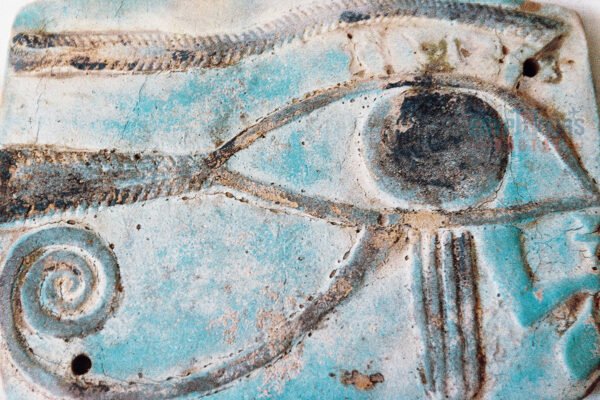
Symbolism Beyond Ancient Egypt: The Eye of Horus Today
The Eye of Horus, an emblem originating from ancient Egyptian mythology, continues to resonate powerfully in modern society. Its symbolism, which originally stood for protection, royal power, and good health, has evolved and found new expressions across various cultural contexts. In contemporary culture, this enduring symbol manifests itself in art, fashion, and spiritual practices, demonstrating its adaptability and enduring significance.
In the realm of fashion, the Eye of Horus frequently appears on clothing, jewelry, and accessories, serving not only as a stylistic choice but also as a marker of spiritual significance. Designers and artists often incorporate this symbol into their creations, appealing to a sense of heritage and timelessness. It is particularly popular in bohemian and alternative fashion circles, where the emphasis on individuality and meaning is paramount. The Eye often symbolizes the idea of insight and protection, attracting those who wish to align their personal aesthetics with deeper meanings.
In the art world, the Eye of Horus has transcended its ancient origins, inspiring numerous contemporary artists to reinterpret its design and significance. Whether through paintings, sculptures, or digital art, the Eye serves as a motif that encourages exploration of themes such as perception, consciousness, and the interplay between light and darkness. Abstract interpretations of the Eye invite viewers to engage with its meaning, fostering a connection to a legacy that spans thousands of years.
Spiritual practices around the globe have also embraced the Eye of Horus, adapting its protective qualities in diverse belief systems. Individuals may incorporate this symbol into rituals, meditations, or talismans, enhancing their spiritual journey by invoking the sense of safeguarding and enlightenment it embodies. Its continued relevance highlights how symbols can transcend time, morphing into new meanings while retaining their historical roots.
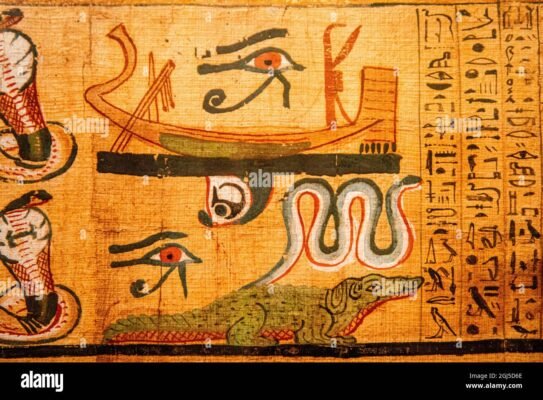
The Power of Symbols: Why the Eye of Horus Endures
The Eye of Horus stands as one of the most recognizable symbols in ancient Egyptian culture, embodying a wealth of meaning that has transcended time and geography. Throughout history, symbols have served as powerful tools for conveying complex ideas and emotions, allowing individuals to connect with broader narratives and beliefs. The Eye of Horus, in particular, symbolizes protection, royal power, and good health, making it a versatile emblem that resonates with varied audiences even today.
The enduring appeal of the Eye of Horus lies in its multifaceted interpretation. This ancient symbol was often associated with the legendary god Horus, who represented kingship and protection. The image itself encapsulates a narrative of resilience, as it is said to represent Horus’s healing after losing an eye in a battle with his uncle, Seth. This story of restoration and protection resonates with individuals seeking strength during personal challenges. Modern adaptations of the symbol are evident in jewelry, tattoos, and various forms of art, which continue to harness its ancient aura of empowerment.
In contemporary society, the Eye of Horus is frequently utilized as a universal emblem of protection. When people embrace this symbol, they often do so as a means of guarding against negative energies or influences. This draws on the historical associations of the Eye as a protective talisman. Furthermore, the Eye of Horus has been adopted by various cultures worldwide, further reinforcing its significance as a symbol that transcends its original context. Its versatility allows it to adapt to changing societal values while preserving its core associations of strength and safeguarding.
The lasting impact of the Eye of Horus highlights how symbols can evolve yet retain their intrinsic meaning. Its continued relevance serves as a reminder of humanity’s search for protection and power through emblematic representations. Thus, the Eye of Horus remains not just a relic of the past but a vibrant symbol that continues to inspire and empower individuals in the modern world.
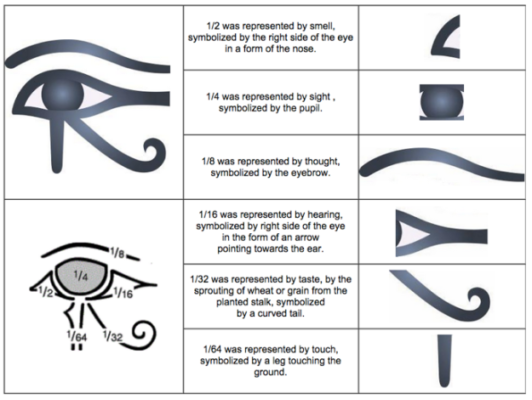
Conclusion: The Legacy of the Eye of Horus
The Eye of Horus remains one of the most recognizable symbols from ancient Egypt, transcending time and geography to become a powerful icon of protection and strength. This emblem, originally representative of the sky god Horus, holds profound significance and has evolved in its interpretation throughout the centuries. Its roots can be traced back to a rich tapestry of mythology and spirituality, where it was believed to offer divine protection against evil and misfortune.
As the Eye of Horus journeyed through the ages, it transformed from an ancient amulet worn by pharaohs and warriors into a symbol that permeates modern culture. Today, it is often seen in various forms, including jewelry, art, and even tattoos, reflecting its enduring appeal. The eye’s depiction not only serves as a decorative element but also as a powerful reminder of the historical beliefs surrounding guardianship and well-being. In this way, the Eye of Horus has maintained its relevance, continuously inspiring new generations who seek to harness its protective qualities.
Culturally, the symbol of the Eye of Horus has inspired numerous adaptations worldwide, stretching beyond its Egyptian roots to various other traditions that embrace similar themes of vigilance and safeguard. The cross-cultural appreciation of the Eye of Horus highlights its universality as a symbol of power and protection, which resonates with a diverse audience. As societies evolve, the Eye of Horus remains firmly anchored in its historical significance while adapting to contemporary interpretations, thereby ensuring its legacy endures in our collective consciousness.
Art and Artists
Art and Artists

